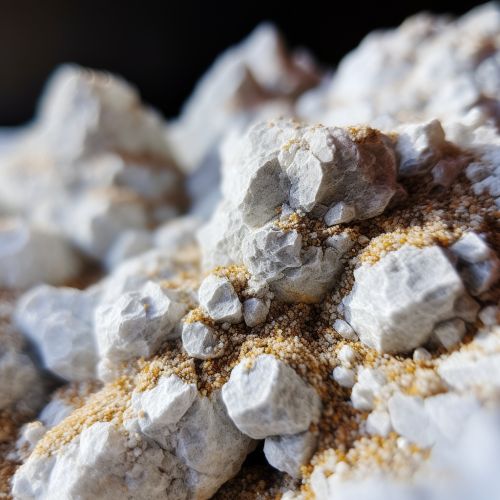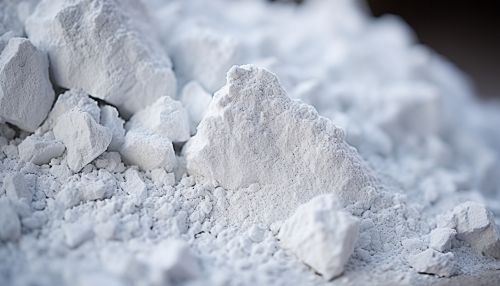Perlite
Introduction
Perlite is a type of volcanic glass that is characterized by its unique ability to expand when heated. This expansion is due to the presence of 2–6% water in the raw perlite rock, which vaporizes upon heating, causing the rock to expand up to 20 times its original size. This expanded form of perlite is commonly used in construction and horticulture due to its lightweight and insulating properties.


Formation and Properties
Perlite forms from the rapid cooling of obsidian lava, which traps water within the rock. This trapped water gives perlite its unique property of expansion when heated. The expansion process, known as "popping", results in a lightweight, porous material with a low density and high surface area. These properties make perlite an excellent insulator and a useful material in a variety of industries.
Perlite is a non-renewable resource, as it is formed from geological processes that take millions of years. It is mined from the earth in its raw form, then processed and expanded for commercial use. Perlite is a naturally occurring mineral, and as such, it is environmentally friendly and can be recycled or composted after use.
Uses
Construction
In the construction industry, expanded perlite is often used as an insulating material due to its low thermal conductivity. It can be mixed with concrete to create lightweight, insulating concrete, or used as loose-fill insulation in masonry walls. Perlite is also used in the manufacture of lightweight plasters and mortars, and as an aggregate in lightweight insulating panels and ceiling tiles.
Horticulture
In horticulture, perlite is used as a soil amendment to improve aeration and drainage. The porous nature of expanded perlite allows it to retain water and nutrients, which can then be slowly released to plants. This makes perlite an ideal component of potting mixes and hydroponic systems. Perlite is also used as a rooting medium for cuttings and as a growing medium for seedlings.
Other Uses
Perlite has a wide range of other uses, including in the filtration of liquids and gases, as a carrier for pesticides and fertilizers, and in the manufacture of refractory bricks and ceramics. In the pharmaceutical and food industries, perlite is used as a filtering agent due to its high surface area and porosity.
Production and Processing
The production of perlite involves a series of processes, including mining, crushing, grading, and expanding. The raw perlite rock is first mined from open-pit mines, then crushed and screened to the desired size. The crushed perlite is then heated to a temperature of 850–900°C, causing the trapped water to vaporize and the rock to expand. The expanded perlite is then cooled and packaged for commercial use.
Environmental Impact
As a naturally occurring mineral, perlite is environmentally friendly and can be recycled or composted after use. However, the mining and processing of perlite can have environmental impacts, including land disturbance, dust generation, and energy consumption. Measures are often taken to minimize these impacts, such as the use of dust suppression techniques and the reclamation of mined land.
